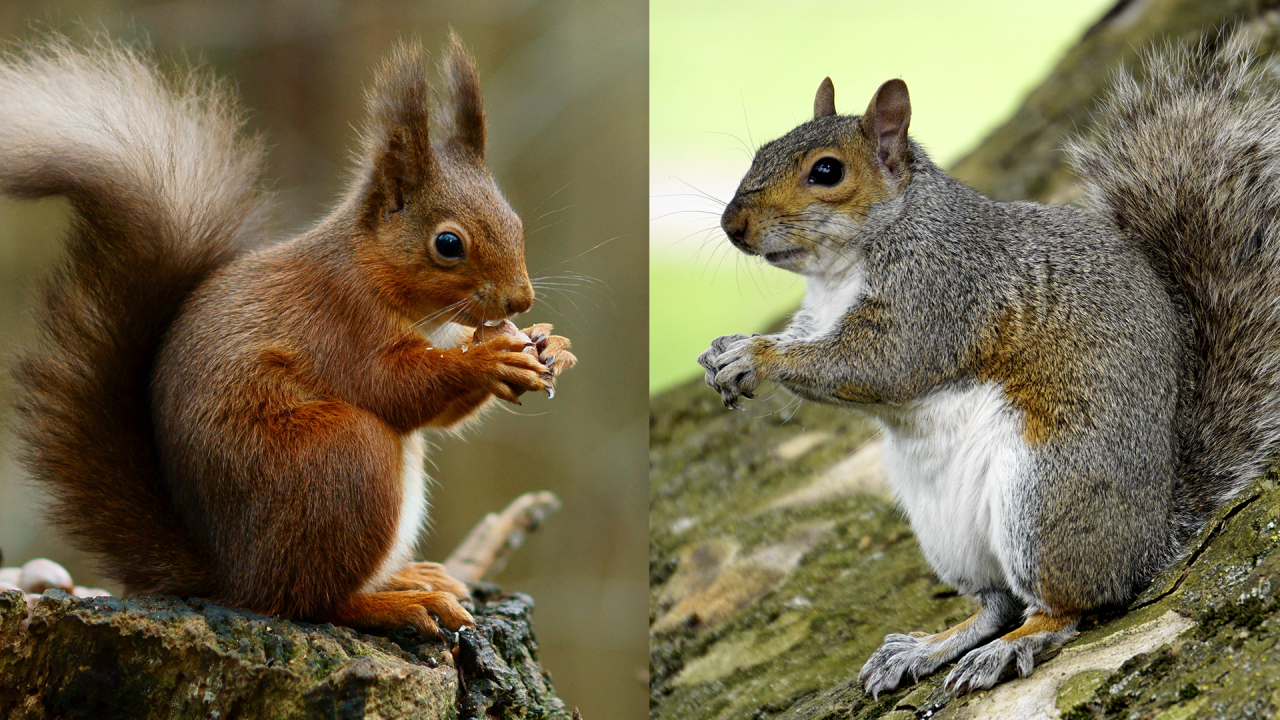
The red squirrel (Sciurus vulgaris) and eastern gray squirrel (Sciurus carolinensis). Credit: Pexels/Peter Trimmings/Wikipedia
It’s entirely possible, even likely, that you underestimate the eastern grey squirrel. Despite having small rodent brains, they are capable of remembering, with a high degree of precision, where they stashed thousands of nuts. If they sense they are being watched, they may pretend to bury their food, suggesting a certain level of self-awareness and cunning. They manipulate acorns in a rather sophisticated way, often removing the root-producing portion of the nut before burial so the acorns don’t sprout and go bad. They also have a keen sense for how long their food will last, eating perishable seeds right away and “squirreling” away longer-lasting ones in the ground or in trees.
All these tricks have allowed grey squirrels (Sciurus carolinensis), natives of the eastern United States, to invade and prosper in Britain, Italy and elsewhere. In the United Kingdom, they’ve displaced the native red squirrel (Sciurus vulgaris) where the two overlap, potentially driving the latter toward local extinction. (If a Brit has occasion to brag about not being conquered since 1066, gently remind them about these overlooked tree-dwellers.) Although grey squirrels are larger and more resistant to certain diseases than their red cousins, new research suggests they may also be better at solving complex problems.
In a paper published in Animal Behavior, researchers from the University of Exeter and the University of Edinburgh captured grey and red squirrels from the Exeter’s campus and exposed them to two tests. The simple task involved accessing a hazelnut stored behind a transparent, hinged lid. The more complex task involved freeing a hazelnut entrapped within a plastic box, by pushing or pulling one of several levers.
Although a similar proportion of greys and reds passed the easy test, 93 percent of the greys figured it out on the first go, compared to only 50 percent of the reds. Results were more dramatic on the second task: 91 percent of the greys solved the complex problem on the first visit, compared with just 29 percent of the reds. The greys were also more likely to switch tactics if they were at first unsuccessful, suggesting a greater degree of “behavioral flexibility” and problem-solving skills. The invaders from the west also tried more times upon repeated failure, suggesting a higher level of persistence, perhaps no surprise to those accustomed with the famous grey squirrel grit.
The native reds weren’t total dummies, however; once they figured out how to solve the problem, they were more efficient and quicker than grey squirrels in getting to those sweet, sweet hazelnuts. The reds that solved the complex problem also completed it more quickly than the greys that did so.
“Our research shows problem solving could be another key factor for the success of greys,” says Pizza Ka Yee Chow, with Exeter’s Centre for Research in Animal Behaviour, in a press release. “This might be especially important for an invasive species like grey squirrels, as they have evolved elsewhere and have to adapt to their surroundings.”
This could be an innate difference, or the result of changes following invasion. “It is not yet clear whether grey squirrels are born better problem solvers, or whether they work harder because they’re an invasive species living outside their natural environment,” Chow says.
